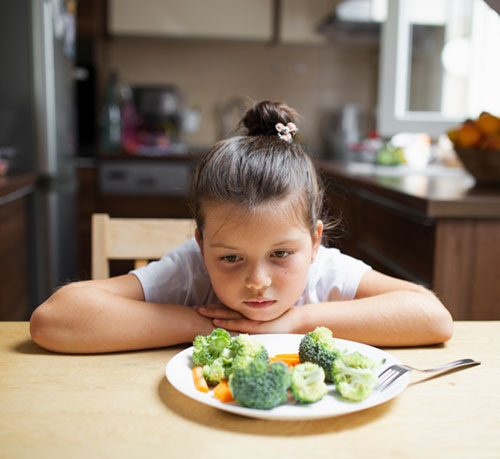
Did you know that approximately 42% of children under 5 years suffer from iron deficiency anaemia (IDA)?
As parents, understanding how to prevent and manage this condition is crucial for your child’s health and development.
Let’s explore what IDA is, how it develops, and practical tips to ensure your child gets enough iron.
What Is Iron Deficiency Anaemia (IDA)?
Iron is a key mineral that helps the blood carry oxygen throughout the body. Without enough iron, a child’s blood can’t transport enough oxygen, which can lead to tiredness, weakness, and difficulty concentrating. If left untreated, it can also impact their growth and overall health.
Causes of Iron Deficiency in Children
- Low iron stores at birth, especially in premature or low birth weight infants, and anaemia during pregnancy can increase the risk of iron deficiency in babies.
- Inadequate iron intake from solid foods, particularly in picky eaters or those who don’t eat enough iron-rich foods.
- Increased iron requirements during rapid growth phases (infancy and early childhood).
- Blood loss due to conditions like parasitic infections (e.g., malaria, intestinal worms, etc.).
- Heavy menstruation in adolescent girls increases the need for iron.
Iron Deficiency in Babies
At birth, babies have iron reserves from their mother that typically last for the first 4-6 months. During this time, breastfeeding provides enough iron. However, after 6 months, babies require additional iron from foods like iron-fortified cereals and pureed meats.
Tip for Mothers: Ensuring your own iron levels are adequate during pregnancy helps ensure your baby has sufficient iron reserves after birth.
Iron Needs for Toddlers and School-Aged Children
As toddlers transition to solid foods, it’s essential to include iron-rich options in their diet. However, toddlers can be picky eaters, which puts them at risk of not getting enough iron.
Tips for Parents:
- Serve a mix of meat, beans, lentils, and spinach for iron.
- Pair iron-rich foods with vitamin C-rich foods like oranges, strawberries, or bell peppers to boost iron absorption.
- In children, limit cow’s milk to 400 to 600 ml per day to avoid interference with iron absorption.

Iron Deficiency in Teens:
Teens need iron to support their rapid growth, development, and energy levels, with higher requirements for adolescent girls due to menstruation.
In adolescent girls, especially those who have started menstruating, the incidence of anaemia can rise significantly, with up to 30% of adolescent girls in developing countries being affected.
This makes iron deficiency particularly common during the teenage years, emphasizing the need for proper nutrition and awareness.

Tips for Parents:
- Ensure your teen eats iron-rich foods like meat, beans, and dark leafy greens.
- If your teen experiences heavy periods, consult a doctor about iron supplements to prevent anaemia.
The Role of Vitamin C in Iron Absorption
Did you know that vitamin C helps in effective iron absorption? Combining foods that are rich in iron with foods that are rich in vitamin C, like citrus fruits or bell peppers, can significantly enhance iron absorption, especially for vegetarians, as plant-based iron (non-haeme iron) is less readily absorbed.

Example: Serve spinach with strawberries or a glass of orange juice to maximize iron absorption.
Iron-Rich Foods for Your Child and Teens
- For Babies: Continue breastfeeding or use iron-fortified formula. After 6 months, introduce iron-rich solids like pureed meats and cereals.
- For Toddlers & School-Aged Children: Offer iron-rich foods like meats, beans, lentils, tofu, and dark leafy greens.
- For Teens: Focus on foods like red meat, poultry, beans, and iron-fortified cereals.
Iron Enhancers and Inhibitors
Some foods help improve iron absorption, while others can interfere with it. Here’s how you can maximize iron intake:
- Iron Enhancers: Vitamin C (found in fruits like oranges and vegetables like bell peppers), haeme iron (from animal sources like meat and fish), and fermented or germinated foods.
- Iron Inhibitors: Foods and drinks like coffee, tea, and calcium-rich dairy can reduce iron absorption if consumed in large amounts at meal times.
Iron Supplements
Iron supplements may be necessary if recommended by your paediatrician. Be mindful that iron supplements can cause constipation, so it’s important to follow the prescribed dosage and seek medical advice if any side effects occur.
When to Consult a Paediatrician?
Do consult a paediatrician if your child shows signs of iron deficiency anaemia, such as:

- Unexplained fatigue or weakness
- Pale skin or a pale appearance in the gums or inner eyelids
- Irritability or difficulty concentrating
- Unusual cravings for non-nutritive substances like dirt or ice (a condition known as pica)
Early detection and treatment are crucial to managing iron deficiency and preventing long-term health issues.
Helping Your Child Stay Strong and Healthy
Iron deficiency is preventable with the right care and nutrition. By offering your child iron-rich foods and ensuring proper iron intake, you can support their growth and overall well-being.

Dr Naveena Karthik
Developmental Behavioural Paediatrician,
Kauvery Hospital, Chennai
Image Courtesy – https://as2.ftcdn.net/ & https://www.nutritionwithwendi.com/

